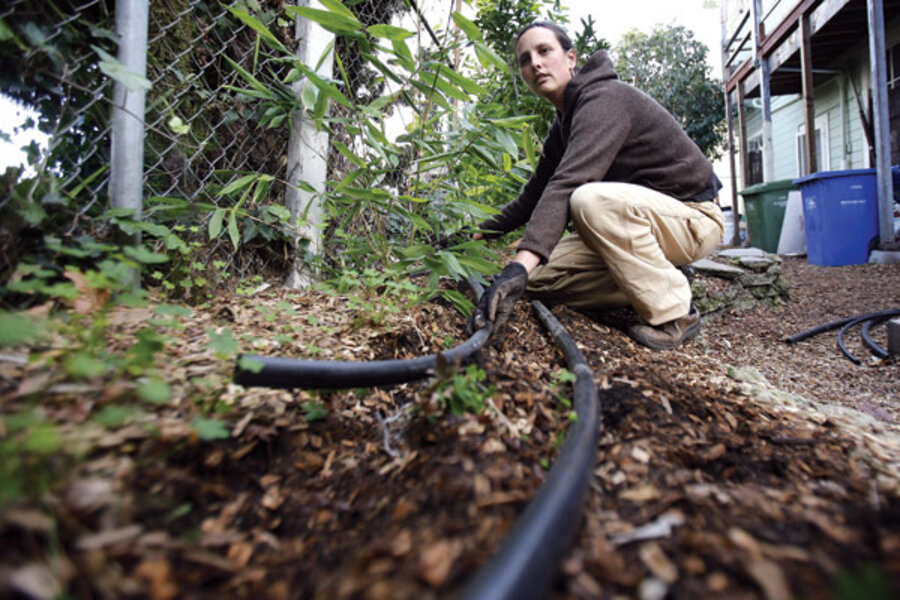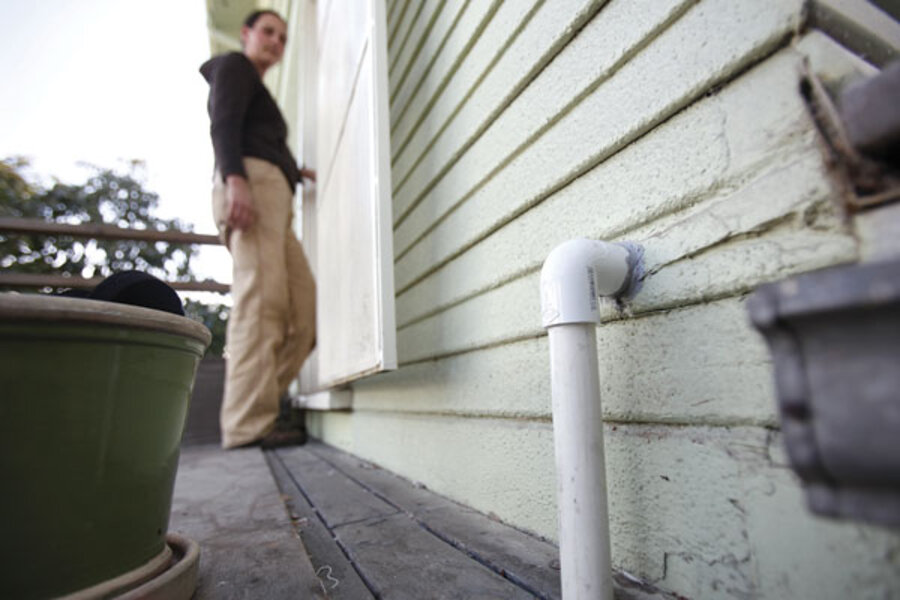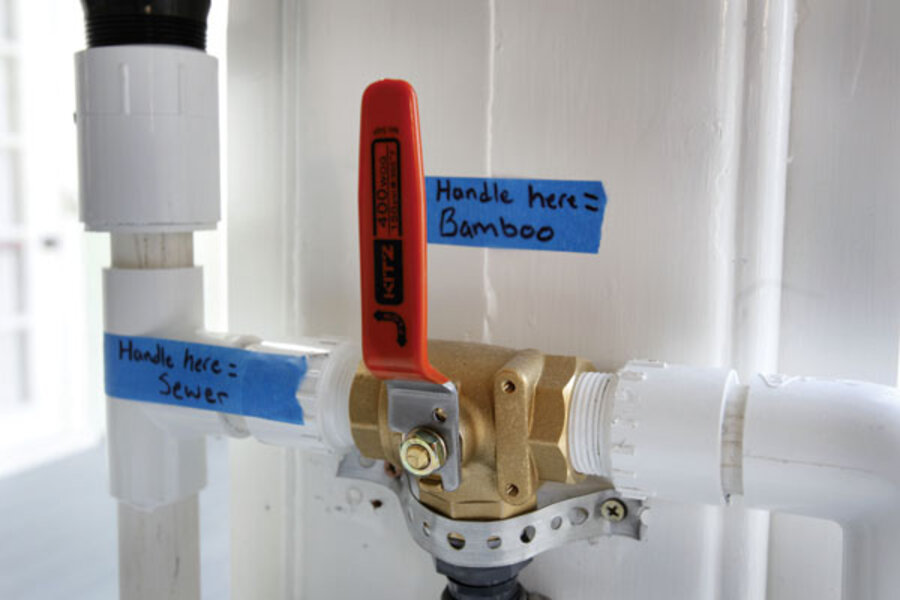Gray water's grass roots
Loading...
| Eco Village, near Koreatown, Los Angeles
If water is the next battleground for a globe facing dwindling water resources, then this 1960s-style community center at the northern end of Los Angeles's Koreatown is at the forefront of the fight.
On this day, Laura Allen, cofounder of Greywater Action, a group that encourages conserving and reusing household water, is in her fourth of a five-day workshop teaching Californians how to reclaim and recycle what has been dubbed "gray water." Typically, gray water includes the discharge from washing machines, sinks, showers, and tubs, which is then used to provide moisture for outdoor plants, from backyard rosebushes to large orchards.
While progress has been made – many institutions, corporations, and municipalities around the world use gray water – activists say there's still a long way to go. And it's groups such as Greywater Action that are helping to drive change.
"Grass-roots efforts – seeing an issue and trying to do something by acting individually and being responsible stewards – are very important," says Kathy Robb, founder and director of the Water Policy Institute in New York.
As an example, she points to the fact that before regulations in California were changed last August to make it legal for homeowners to install or alter a simple gray-water system without a construction permit, there were already an estimated 2 million unpermitted systems in the Golden State.
This is evidence, Ms. Allen says, that, given the opportunity, state residents will embrace the technology for both economic and environmental reasons.
'Laundry to landscape' systems
'This is the way the world is going. We all need to learn to save water," says Trent Cawthon, a handyman from Redondo Beach, Calif., who aspires to be a contractor and feels that expertise with gray-water systems will make his services more valuable.
Mr. Cawthon is part of a four-person team that has designed a simple "laundry-to-landscape" system. They will practice their skills at the community center, running plastic pipes from the laundry room to the front of the building, where the rinse water will irrigate four fruit trees.
Cawthorn's teammate, Allan Haskell from Echo Park, Calif., runs a green consulting business that helps restaurants find compostable containers for takeout food. He hopes to expand his business to encompass gray-water planning.
Diana Lawrence, a former urban planner, is attending the workshop because she hopes to downsize her utility bills through gray-water usage.
Landscape architect Robin Grabs of San Pedro, Calif., has come because two clients requested gray-water systems. It's fascinating, she says, but the amount of information is overwhelming.
Allen understands this reaction. "Fitting all the important things that gray water brings into a five-day class and a manageable package is a challenge," she says. The course has to cover plant and soil information, plumbing, and landscaping and design skills. It's aimed at a wide range of users – from those who must work within small budgets to those with larger ambitions, as well as people who simply want to water the plants in their yard inexpensively and those who might have a large commercial landscape.
Legalization boosts demand
In the months since California changed the gray-water permit requirements, demand has begun to build statewide, says John Leys of Sherwood Design Engineers in San Francisco, which has clients across the United States as well as abroad.
Mr. Leys recently consulted on new water-planning regulations for Abu Dhabi, capital of the United Arab Emirates, which has water needs similar to those in the American Southwest.
'Ten years ago, we were not seeing any demand for gray-water systems," he says, but now clients of all types are requesting projects that range from simple and inexpensive backyard irrigation retrofits to complex, multipurpose gray-water systems that are part of the design from the beginning.
Leys notes that as pressures over drought regulations and energy conservation have started to build, many businesses have begun to see that reclamation and reuse make sense from both a business and an environmental standpoint.
For instance, if a development of 10,000 new homes reduces its overall potable water use by as much as 25 percent, he says, that means a huge savings in construction and utility costs.
Most of the momentum toward greater use of gray-water systems is not being driven by economics – yet. "But that is inevitable," Leys says, "if you consider that despite the vast oceans covering the planet, less than 1 percent of the world's water is both fresh and accessible for human use."
He believes that it's important to plan for solutions in advance of a water crisis, and that when and how that's done will become critical.
Today, even with conventional water-supply strategies and technologies, water shortages are common in communities around the globe. The World Health Organization reports that more than 2 billion people – roughly 1 out of every 3 people on the planet – live in a water-stressed area.
Commenting on the importance of reclaiming and reusing water, Leys says: "History demonstrates that properly managed water resources can be the deciding factor in determining the habitability of an individual site, the sustainability of a community, or the survival of an entire civilization."
[Editor's note: The original cutline of the first photograph misstated the type of system being installed and for whom.]







